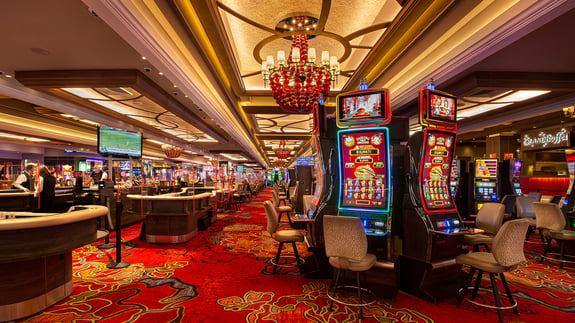In a vibrant and stimulating world of gaming establishments, wherein fortune and tactics intertwine, hues and design play a pivotal role in attracting players. As soon as players step into a casino or access a gaming platform, they are enveloped in a visual feast that captures their attention and lures them to explore more. Vivid colors, engaging graphics, and innovative layouts are carefully crafted to create an environment of excitement and expectation, ultimately enhancing the gaming experience.

As players move through the dynamic landscape of casino games, they come across a variety of designs that not only serve aesthetic purposes but also affect feelings and decision-making. Hues like red and gold symbolize riches and luck, while soothing blues and emeralds can create a more tranquil environment. Understanding how these elements function together enables casinos to create an welcoming and energizing atmosphere that encourages players to interact with the games, invest additional time at the tables, and boost their overall enjoyment.
The Study of Color in Gaming Establishments
Hue plays a critical role in the creation of casino games, influencing players’ feelings and responses. Vivid and vibrant colors, such as crimson and yellow, are often used to stimulate thrill and capture attention. These shades create a sense of pressure and dynamism, encouraging gamblers to participate more eagerly with the game. By thoughtfully selecting tints, developers aim to elicit emotions of pleasure and expectation, which can enhance the overall player experience.
Various shades also have psychological associations that can affect how players perceive their odds of winning. For instance, emerald is commonly associated with good fortune and abundance, making it a popular choice in games like the roulette wheel and poker setups. This association can result gamblers to feel more positive and confident in their play, ultimately encouraging them to stake more. Grasping these links allows game developers to design environments that enhance player happiness and engagement.
Moreover, the layout of casino game interfaces often utilizes blended colors and differing colors to instruct players’ responses. For instance, successful outcomes may be highlighted with bright, differing hues, creating a visual cue. This method reinforces favorable outcomes and supports repeated participation. By exploiting the psychology of color, gaming venues can create activities that not only attract players but also keep them engaged and committed in their gaming experience.
Creative Features that Attract Players
The aesthetic appeal of casino games is largely influenced by the implementation of bold colors. Bright and contrasting colors are deliberately chosen to create an appealing atmosphere that captures interest. For instance, reds and golden hues often signify good fortune and wealth, which is why they are prevalent in the color schemes of slot machines and game surfaces. These colors not only draw players in, but they also evoke emotions associated with thrill and expectation, enhancing the overall gaming experience.
In parallel to color, the aesthetic and layout of casino games play a significant role in player attraction. Games are designed to be intuitive, ensuring that players can quickly understand the guidelines and gameplay. User-friendly interfaces, along with captivating graphics and motion, help maintain player interest and encourage extended play sessions. The tactile elements, such as the feel of the buttons and the audio of the games, also contribute to a holistic sensory experience that keeps players immersed.
Finally, conceptual elements in game design can greatly influence player choice. Many casino games are inspired by media, fairy tales, or exploration motifs, featuring symbols and characters that connect with players. https://f8bet80.one/ These themes create a sense of engagement and relatability, making each game feel unique. When players feel a bond to the concept, they are more likely to opt for that game over others, leading to higher participation and excitement within the gambling environment.
Case Studies: Notable Gambling Game Designs
One noteworthy example of successful casino game design is the popular slot machine series based around blockbuster movies. Games such as those based on the The Wizard of Oz and Game of Thrones utilize dynamic colors and top-notch graphics to engage players in recognizable narratives. The employment of lively visuals and engaging sound effects grabs the attention of players, creating an affective connection to the theme. This strategy not just fosters longer play but also improves the overall gaming experience, resulting in increased player retention.
Another notable case is the use of color in table games like blackjack and roulette. Casinos often create these games with rich reds and greens, colors traditionally associated with luck and wealth. F8BET80 For instance, the emerald felt on a 21 table provides a soothing effect, while the red accents in the wheel invite anticipation. This intentional use of color helps to foster an inviting atmosphere that stimulates players to join in, addressing their psychological impulses and increasing their enjoyment.
Finally, online casino games that include social features and vivid, lively designs have seen remarkable success in engaging players. Games like Zynga’s Poker and Slot-O-Mania leverage vivid colors and playful animations to create an inviting online environment. The addition of leaderboards, community sharing options, and in-game rewards fosters competition and community, pulling players in for longer sessions. Such designs not just make the games visually attractive but also underscore social interaction, a key factor in player retention and engagement within digital casino environments.
